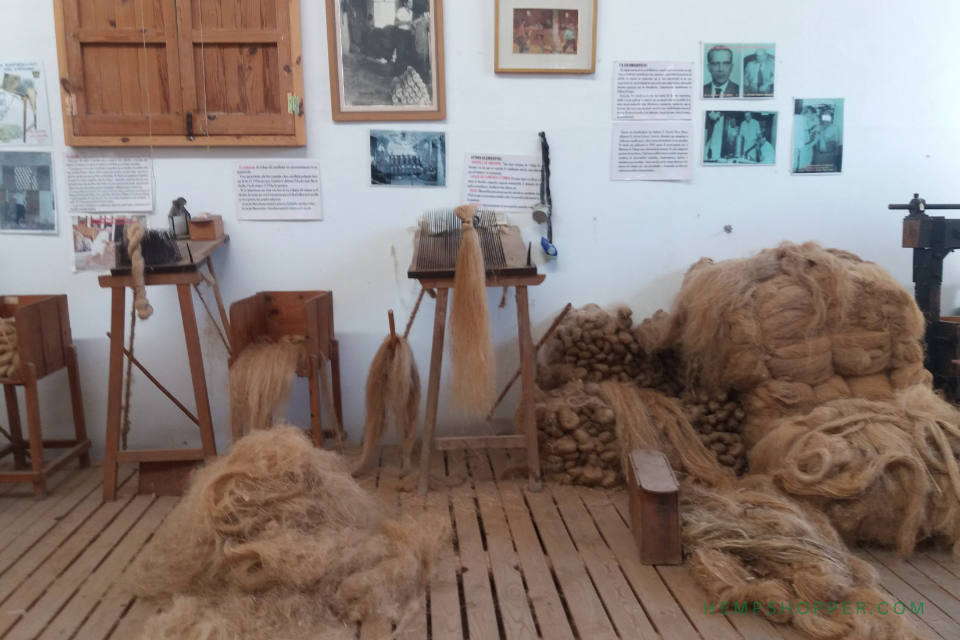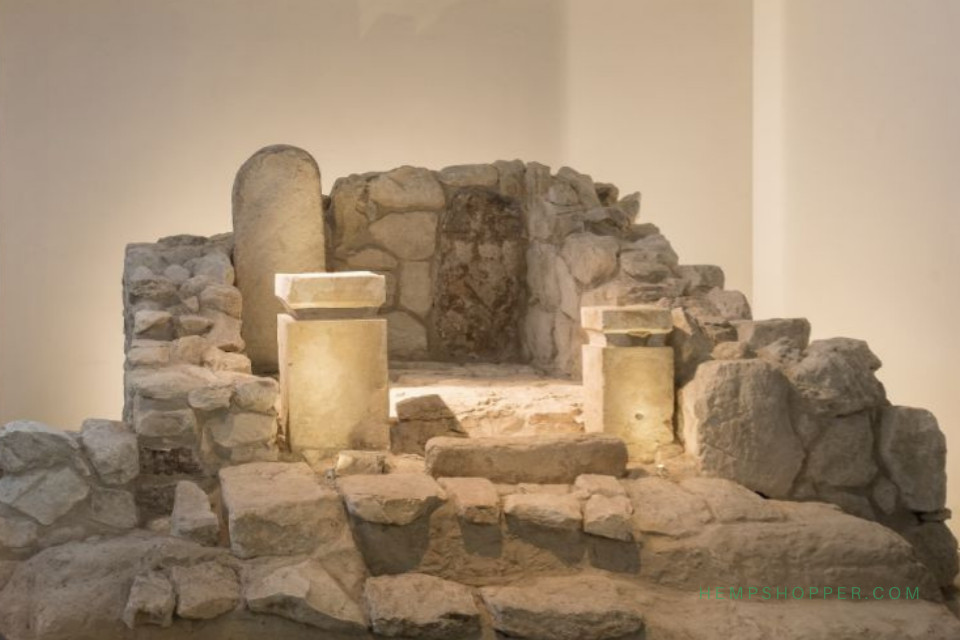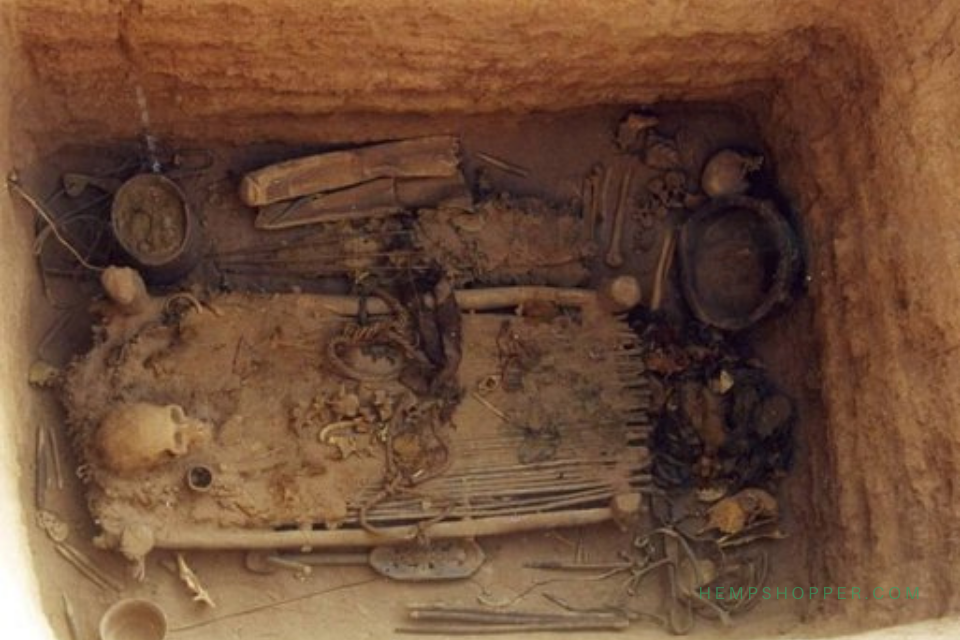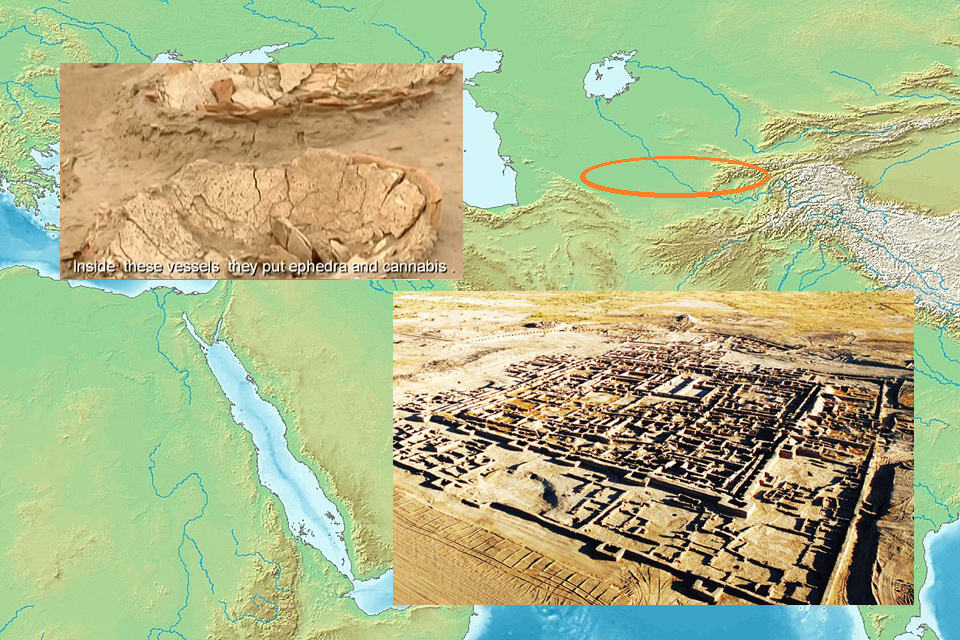1800 BCE: Ancient Egyptian magic spells require cannabis

1800 BCE: Ancient Egyptian magic spells require cannabis
Popular belief suggests that a famous 4500-year-old ship, found back in pristine condition near the Great Pyramid of Giza, was build using hemp rope. The archaeologists had discovered that ancient Egyptian builders had tied the wooden beams of the vessel together with amazingly well-preserved ropes. However, a closer study revealed that this rope was not made of hemp but instead of a type of grass called halfa.
There is evidence, though, that the ancient Egyptians did indeed use cannabis, only it was not for industrial purposes.
Ancient Egyptians and (medicinal) marijuana
Ancient Egyptian scribes mention a plant called Shemshemet (SmSmt) in texts at the pyramid of Unas, in medical papyri, and inscriptions from the New Kingdom. The identification of this plant with cannabis (or more precisely, with medical marijuana) was made by Warren R. Dawson in Studies in the Egyptian Medical Texts in 1934. Scholars have found this word in many different sources over the years. In her book, An Ancient Egyptian Herbal, Egyptologist Lise Manniche notes the reference to this “plant medical cannabis” in several Egyptian texts. One of these texts dates as far back as the eighteenth century BCE.
The Ramesseum Papyri, one of the oldest medical records ever discovered, details the treatment of certain eye diseases. It involves ground celery and cannabis that is left in the dew overnight. To be cured, the patient’s eyes were to be washed with this remedy in the morning.
Cannabis, a magical weed
Ibrahim Attia, the chief conservator at the Coptic Museum in Cairo, cited different works that mention cannabis. There is, for example, the famous Ebers Papyrus from 1550 BCE. This ancient work of herbal knowledge contains magical spells against various ailments. To make some of these sacred spells work, the ancient Egyptian writer lists cannabis as a required component in several incantations.
Cannabis pollen was found on the mummy of Ramesses II, who died in 1213 BCE. Scientists retrieved seven pollen grains of what is most likely cannabis from the famous Pharaoh’s mummy.
Industrial hemp
One of the final signs of cannabis use in ancient Egypt (and arguably the best evidence that they also grew industrial cannabis) comes from historical records showing Roman emperor Aurelian imposed a tax on Egyptian hemp in the third century CE.
Research and text © Hempshopper Amsterdam.


 Hempshopper Amsterdam
Hempshopper Amsterdam 






